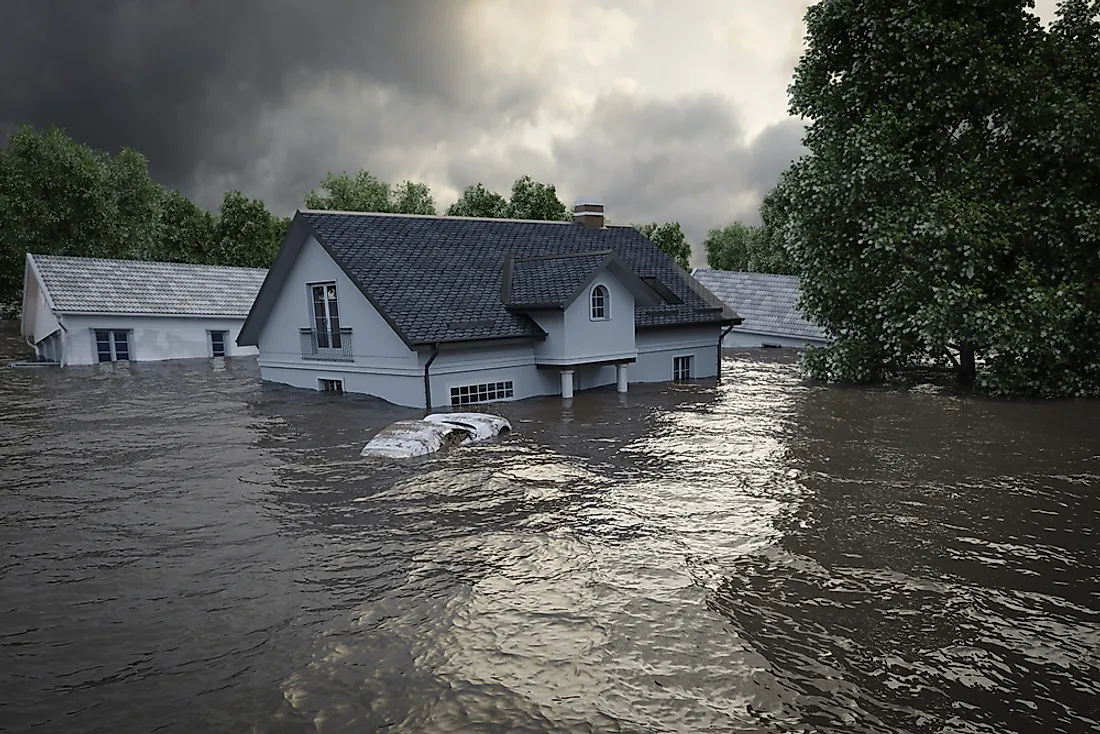What Causes Floods?

Floods are among the most common natural occurrences on the planet. Unfortunately, sometimes they turn disastrous, killing people and destroying property, forcing humans to come up with countermeasures against flooding. There are many causes of floods, some are natural and some are human-made. Some of the causes of floods include the following.
Rainfall
Most places in the world receive rainfall every year, with higher amounts recorded during the peak rainy seasons. Some rainwater is absorbed by the ground where it goes on to form underground water, and some of it evaporates back into the atmosphere to form clouds which will later fall as rain. Sometimes, the rain becomes too heavy and ends up exceeding the rates of absorption and evaporation. This causes the excess water to flow over and submerge the land for long periods. Heavy rainfall is the biggest contributor to natural flooding incidences around the world, especially in the tropics.
Rivers and Lakes
Sometimes the rate at which water flows into a river or a lake exceeds the rate at which water exits these water bodies. This causes them to spill water over their banks, and eventually, the water starts flowing over the adjacent land causing floods. Increase in the inflow of water into rivers and lakes is caused by heavy rainfall that occurs at some point along their course with the heaviest effects being felt downstream where the river starts to flatten out and slow down.
Melting of Glaciers
As the pace of glacial melt accelerates due to global warming, the vast water that is held up in the Antarctic is released into the oceans which in turn causes a surge in water levels in coastal areas around the world. Depending on elevation, some countries are more susceptible to rising sea levels than others.
Cataclysmic Events
In December 2004 a 9.1 magnitude earthquake occurred in the Indian Ocean. This undersea mega thrust triggered giant tsunamis that created waves of more than 90 feet high. The tsunami was responsible for the deaths of around 227,000 people who inhabited coastal towns in 14 different countries that bordered the ocean with Indonesia bearing the most damage on both property and life.
Human-Made Causes
In the quest to make life easier, man has always been involved in activities that seem to go against nature. Hydro-electric power, for example, is fuelled by dams with most holding huge amounts of water that rival some lakes. The water is usually held back by carefully designed walls that prevent spillage of water. Nature, however, is a force which cannot be contained, and sometimes these walls collapse and release all the water causing flooding in the adjacent areas destroying property and life in the process.
Dealing With Floods
Floods always follow a pattern, and there are areas that are highly susceptible to floods compared to others. Knowing these areas allows people the chance to avoid them and settle in areas of higher altitude and further away from the flood hotspots. Planting of trees also helps mitigate flooding as plants act as natural barriers to floods.











